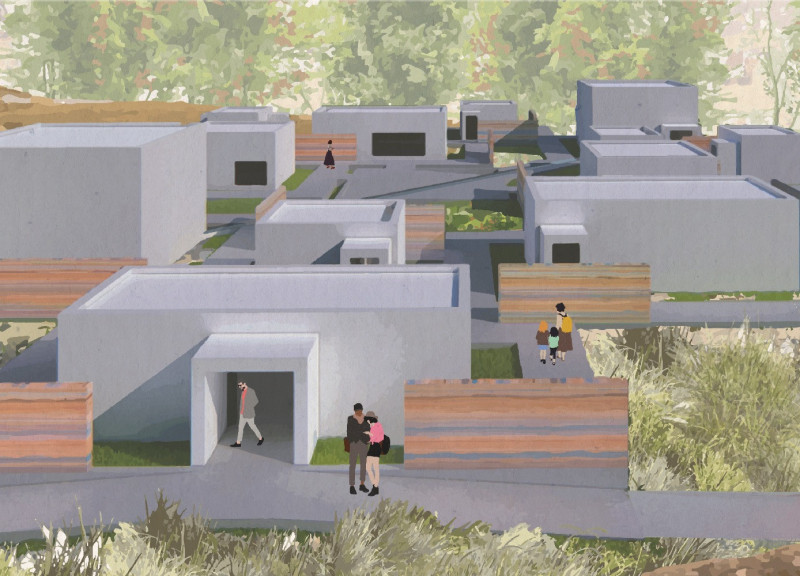5 key facts about this project
The Pavilion is organized into distinct functional areas, including exhibition spaces, conference rooms, and communal gathering spots, allowing for a multifunctional use. The design emphasizes interconnectivity, offering seamless transitions between spaces. This layout is intended to guide visitors through a curated journey, showcasing artifacts and historical narratives that reflect the evolution of human experience.
Unique Design Approaches
This architectural project distinguishes itself through its thoughtful integration of space and materials. The designers have utilized concrete for its structural integrity, ensuring a durable foundation. Glass is employed extensively to foster transparency and natural light, establishing visual connections with the surrounding environment. Wood components add warmth, creating an inviting atmosphere while maintaining a sustainable approach. Stone elements are incorporated in water features, highlighting the significance of water in historical contexts.
The incorporation of symbolic water features throughout the Pavilion not only enhances the aesthetic quality but also represents the flow of human history. This design choice encourages exploration and prompts engagement, allowing water to guide visitors from one exhibit to the next. Additionally, the Pavilion’s flexible exhibition areas accommodate temporary displays, ensuring the content remains relevant and dynamic, reflecting ongoing cultural dialogues.
Visitor Engagement and Functionality
The Pavilion’s design prioritizes visitor engagement by including various areas for interaction, such as performance spaces and cafés. These communal zones are intended to foster social interactions among visitors, complementing the educational purpose of the exhibition areas. Careful attention to layout and circulation routes facilitates movement through the Pavilion, optimizing the overall experience while maintaining comfort.
The project demonstrates a commitment to sustainability, with careful material selection and consideration for environmental impacts. This focus on ecological balance supports a broader architectural vision while enhancing the Pavilion’s role as a cultural hub.
To gain a deeper understanding of the Pavilion of Humanity, including its architectural plans, sections, and design elements, interested readers are encouraged to explore the detailed project presentation. The architectural ideas embodied in this project are significant for those looking to understand contemporary cultural architecture and its implications in the modern context.























